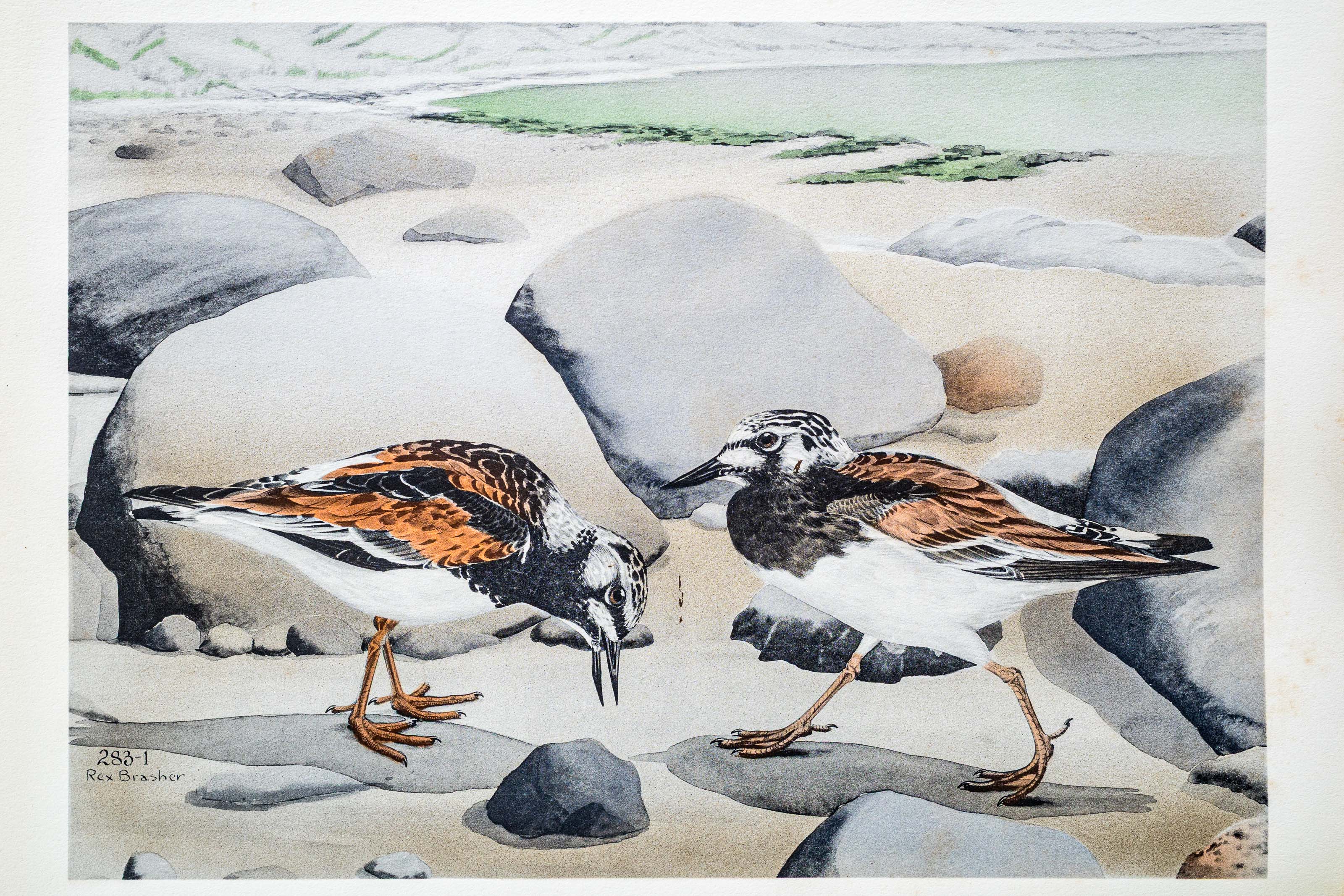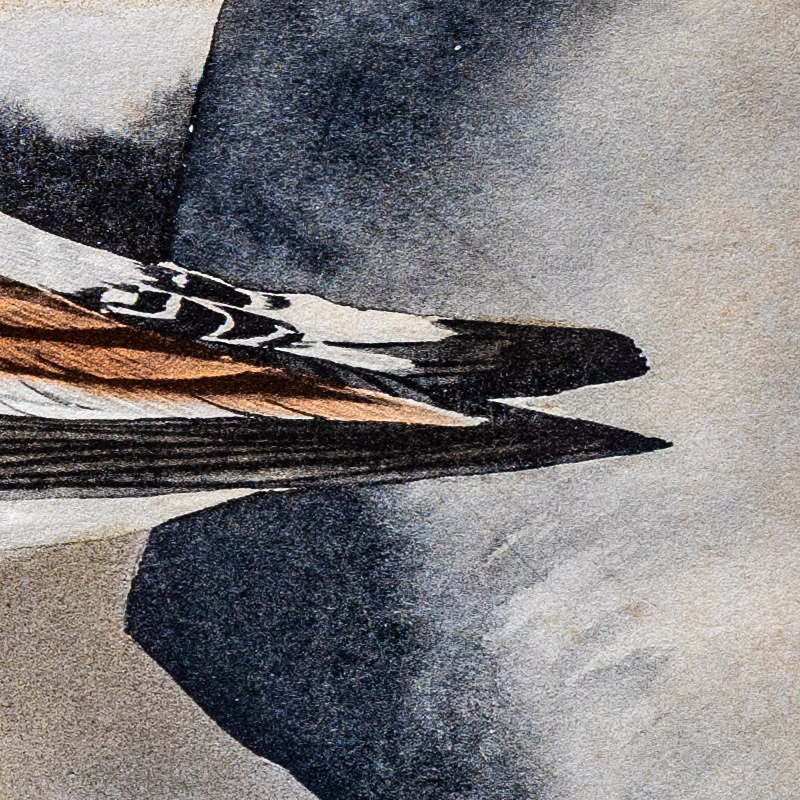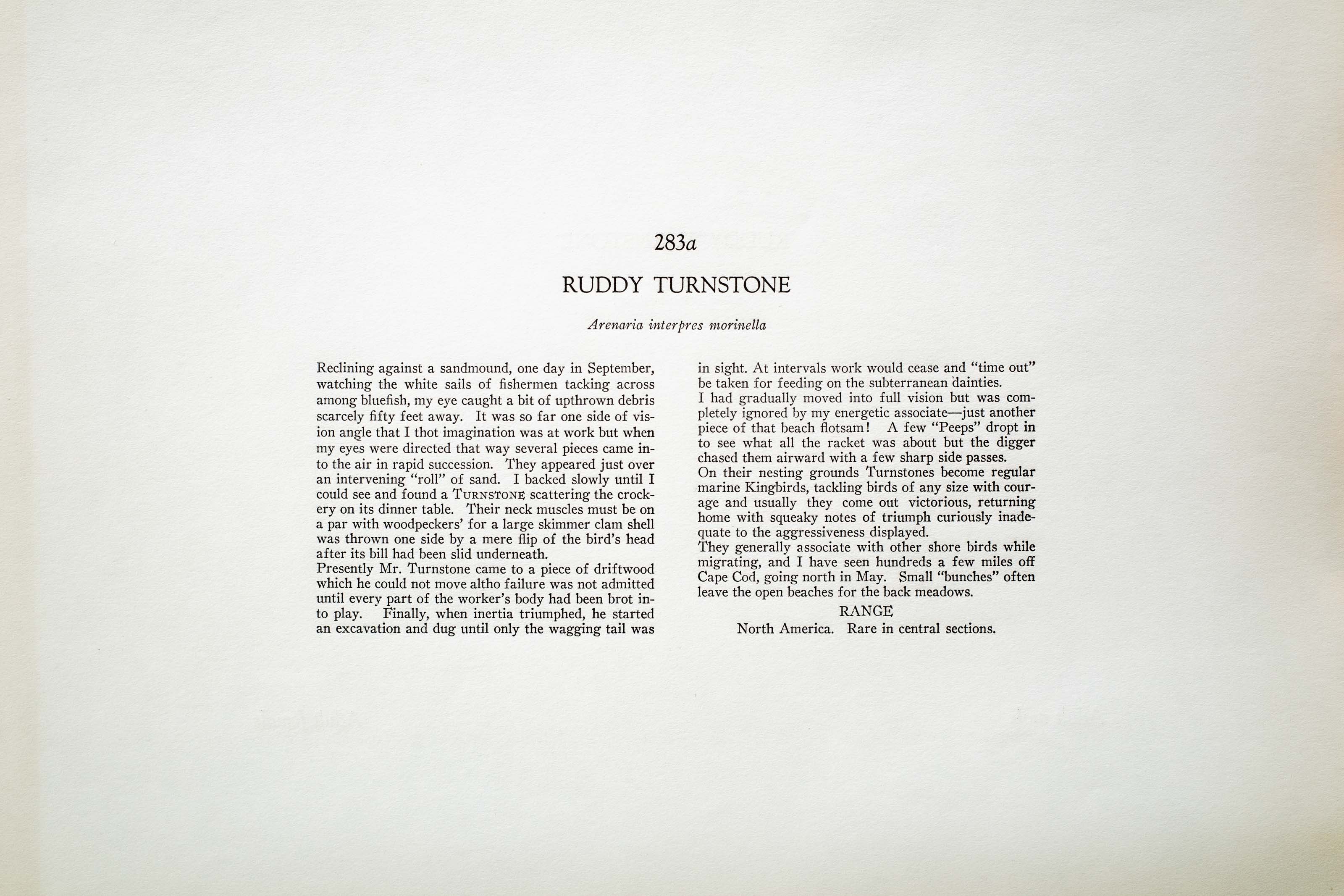






Unknown
1930
4
283a
A team of dedicated board members, volunteers, and student interns has published every page in Volume 9. This volume includes 360 images of paintings and lyrical descriptions of birds, now available online for everyone to enjoy anywhere in the world. This is a monumental task. Each volume requires approximately 400 hours to photograph, edit, transcribe, catalog, and publish online. We need your support to complete this work.
If you're tech-savvy, have a good eye, are meticulous with details, and love structured data, please consider volunteering by emailing us at hello@rexbrasher.org.
We encourage all bird lovers and supporters to consider a monetary donation to support our mission to make Rex's work available for everyone. You can provide a one-time or recurring donation online.
Reclining against a sandmound, one day in September, watching the white sails of fishermen tacking across among bluefish, my eye caught a bit of upthrown debris scarcely fifty feet away. It was so far one side of vision angle that I thot imagination was at work but when my eyes were directed that way several pieces came into the air in rapid succession. They appeared just over an intervening "roll" of sand. I backed slowly until I could see and found a TURNSTONE scattering the crockery on its dinner table. Their neck muscles must be on a par with woodpeckers' for a large skimmer clam shell was thrown one side by a mere flip of the bird's head after its bill had been slid underneath.
Presently Mr. Turnstone came to a piece of driftwood which he could not move altho failure was not admitted until every part of the worker's body had been brot into play. Finally, when inertia triumphed, he started an excavation and dug until only the wagging tail was in sight. At intervals work would cease and "time out" be taken for feeding on the subterranean dainties.
I had gradually moved into full vision but was completely ignored by my energetic associate — just another piece of that beach flotsam! A few "Peeps" dropt in to see what all the racket was about but the digger chased them airward with a few sharp side passes.
On their nesting grounds Turnstones become regular marine Kingbirds, tackling birds of any size with courage and usually they come out victorious, returning home with squeaky notes of triumph curiously inadequate to the aggressiveness displayed.
They generally associate with other shore birds while migrating, and I have seen hundreds a few miles off Cape Cod, going north in May. Small "bunches" often leave the open beaches for the back meadows.
North America. Rare in central sections.